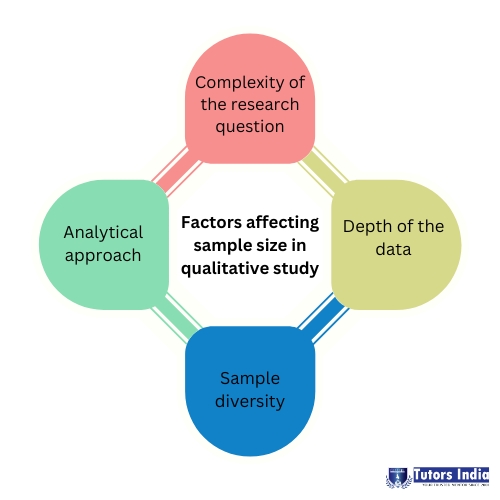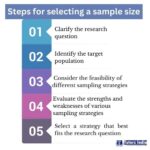Sample sizes for saturation in qualitative research
A critical review on “Sample sizes for saturation in qualitative research: A Systematic review of empirical tests”, published in Social Science & Medicine, Volume 292, January 22, 114523
Introduction
The paper “Sample sizes for saturation in qualitative research: A Systematic review of empirical tests”, published in Social Science & Medicine, Volume 292, January 22, 114523, is a comprehensive systematic review of empirical studies that have tested the concept of saturation in qualitative research.
Critique
- The paper examines a range of studies across different fields and methodologies to identify the optimal sample size for achieving data saturation. One strength of the paper is its rigorous methodology. The authors searched several databases and screened studies based on strict inclusion and exclusion criteria. They also assessed the quality of each study using a standardised tool, which added to the reliability of their findings.
- The paper concludes that this can be achieved with relatively small sample sizes in some studies, while larger ones may be necessary for others. The authors also identified several factors that can influence the sample size needed for saturation, such as the complexity of the research question, the heterogeneity of the population under study, and the richness and diversity of the data.
- One potential limitation of the paper is that it does not provide clear guidance on determining the adequate sample size for qualitative research. While the authors highlight the importance of considering contextual factors, they do not offer a definitive answer on balancing them to arrive at an appropriate sample size. This could leave some researchers unsure of how to apply the findings of this review to their research.
- Another limitation is that the review is focused exclusively on studies that have tested saturation in qualitative research. While saturation is a fundamental concept in qualitative research, other factors beyond sample size may influence the quality and validity of qualitative data.
What is an adequate sample size according to the paper?
The concept of sample size in qualitative research differs from that of quantitative research, where the focus is on statistical power and representativeness. The sample size in qualitative research is based on data saturation, where the researcher collects data until no new information or themes emerge.
The paper “Sample Sizes for Saturation in qualitative research: A systematic review of empirical tests” by Guest, Bunce, and Johnson (2022) aims to guide how to determine an adequate sample size for achieving data saturation in qualitative research. The authors conducted a systematic review of 88 studies that tested the concept of saturation across various disciplines.
Based on their review, the authors concluded that no fixed sample size guarantees saturation. Instead, the sample size should be determined based on the complexity of the research question, the richness of the data, the diversity of the sample, and the analytical approach used. They suggest that the sample size should be determined iteratively, with the researcher continuously assessing the quality and depth of the data until saturation is reached.

Conclusion
To conclude, the paper is a valuable contribution to the literature on sample sizes for saturation in qualitative research. It emphasises the need for the researchers to carefully consider the contextual factors when determining the appropriate sample size for their study. However, the paper’s practical applicability may be constrained for some researchers due to the lack of specific guidelines on how to do this. In addition, the paper suggests that the sample size should be determined based on the research question, data richness, sample diversity, and analytical approach. The sample size in qualitative data is based on data saturation, wherein the data is collected until no new information can be gathered.
Tutors India has been offering dissertation services since 2001 and has a full-fledged team of academic writers who ensure the work complies with university standards. In addition, it provides educational content from reliable sources, which assists the students in the dissertation process. It makes sure that the work is error- and plagiarism-free after multiple editing so that only the best work is provided to the students.

 Previous Post
Previous Post Next Post
Next Post